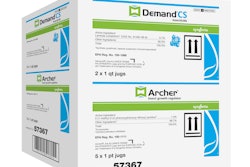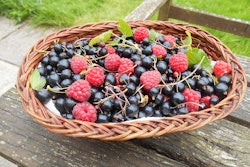 This interactive fountain at the Anaheim Convention Center was completed back in 2013, and is just one of the many projects California Waters has completed.
This interactive fountain at the Anaheim Convention Center was completed back in 2013, and is just one of the many projects California Waters has completed.Photo: California Waters
The California drought has caused a number of changes as people strive to cut back on their water usage. Along with natural grass yards, water features are taking the heat.
With rainfall lacking for so long, the public perception of water features as wasteful is a difficult obstacle to overcome for companies specializing in the waterscaping niche.
California Waters, a Yorba Linda-based company that specializes in water features and repair, has actually managed to increase its sales to about $6 million this year, according to the L.A. Times. Recently the company added construction as a service so it could manage projects from start to finish.
“What we don’t know about is the business we don’t get from people who would have called us before,” said Jeffery Barman, co-owner of California Waters.
In a phone interview on Wednesday, Barman said that most customers are aware of the need to conserve water, but most don’t understand how much water will be used by his company’s creations compared with other landscaping features.
Lately the company has been spending a lot of its time engineering more water-efficient fountains.
Although the state’s conservation rules permit recirculating fountains, local governments and water districts have gone back and forth on the wording of rules on water features – including whether they are authorized – causing many potential customers to be uncertain as to whether they are truly allowed.
“It is correct to say that there are older, usually smaller features that consume more water than they should, but lumping all fountains together ignores that most recirculate and modern fountains are designed to minimize splash and evaporation,” Barman said. “There’s also less likelihood for them to leak.”
Barman’s company has seen an increase in demand for the renovation of historical and older fountains, not only to save water but also so to cut energy use by installing better pumps.
Southern California’s Desert Water Agency, Rancho California Water District, and Palm Springs City Council lifted bans on decorative fountains last year, noting that recirculating features don’t waste a significant amount of water.
Some area residents felt lifting the ban sent the wrong message. Chris Ewing, the president of Desert Water Agency, said the ban was “an important symbol that we are in a drought.”
Since the water features are still not actually banned, Rick Baeza, owner of California Fountain Scapes in Castaic, has been taking advantage of selling customers on how little water his recirculating fountains waste.
He advises his customers on using calmer fountains that don’t splash so much water so less evaporates. His recirculating fountains, Baeza says, will lose less water from weeks of evaporation than the amount it takes to flush a toilet at a restaurant.
“I hope we get a good, long rain,” Baeza said. “Business has been slow. This has been affecting sales big time, for sure.”
California Waters’ service division has been hit the hardest so far, with a 15 percent drop in sales. Despite all this, the business is still focused on growing and is looking to expand into Utah and Arizona.
“It would be obtuse of me and my company to believe that the same number of fountains are being requested and designed and built as if there were no water issues,” said Barman. “But I also believe, as people come to understand the drought better and the actual water use of a fountain, the clients – especially the larger ones – are still committed to the fountain.
“It still produces a gathering spot and provides noise and sound people don’t want to let go of.”









